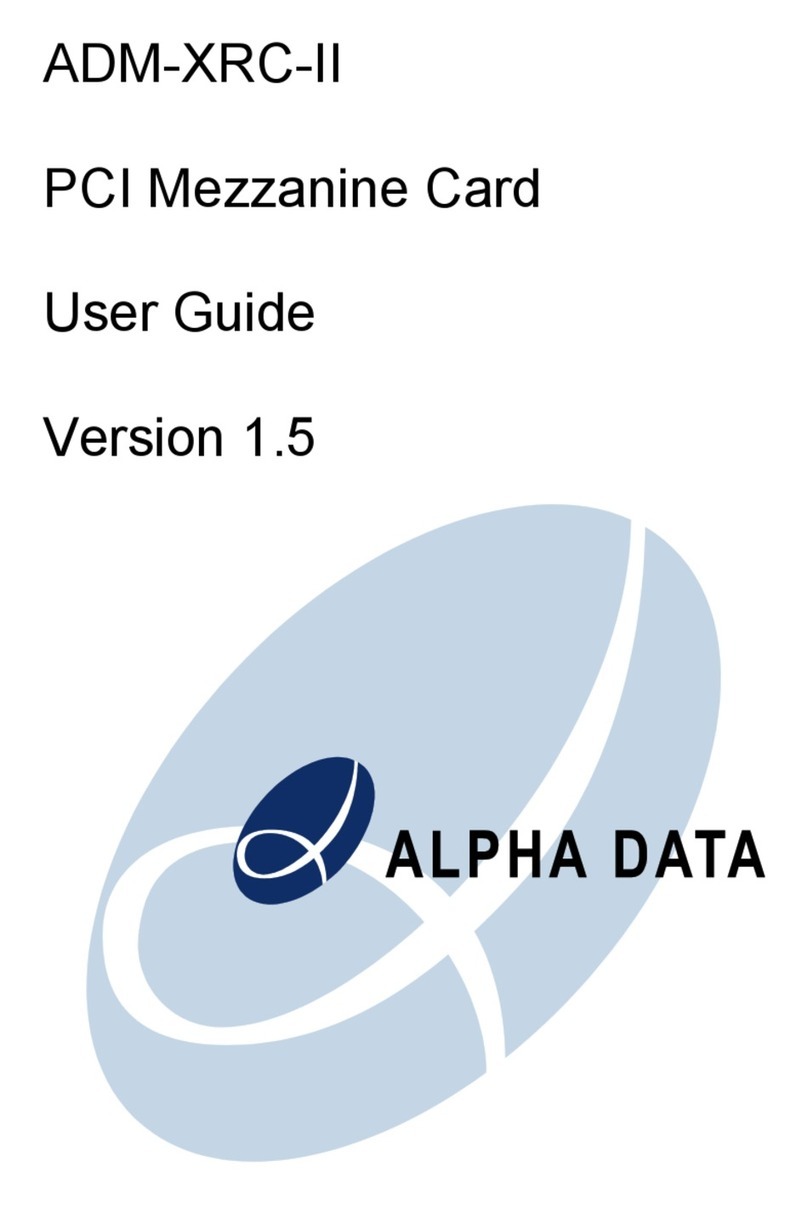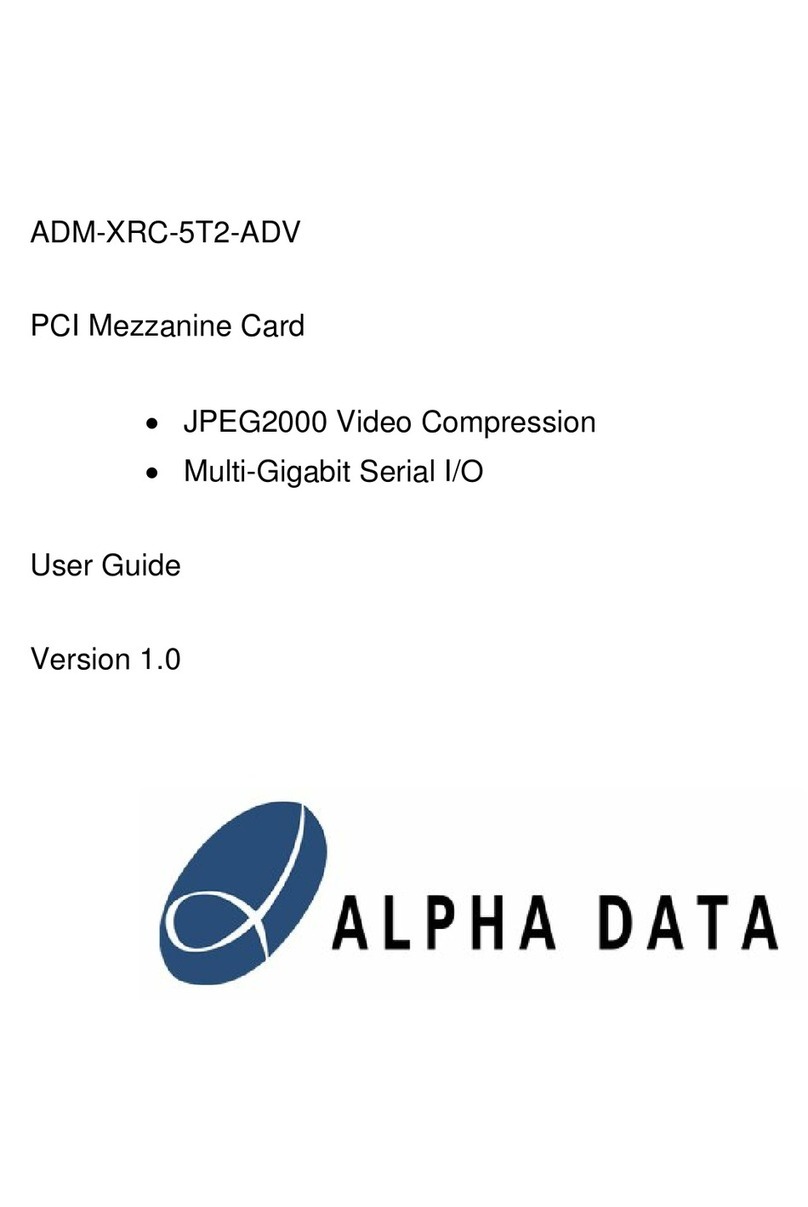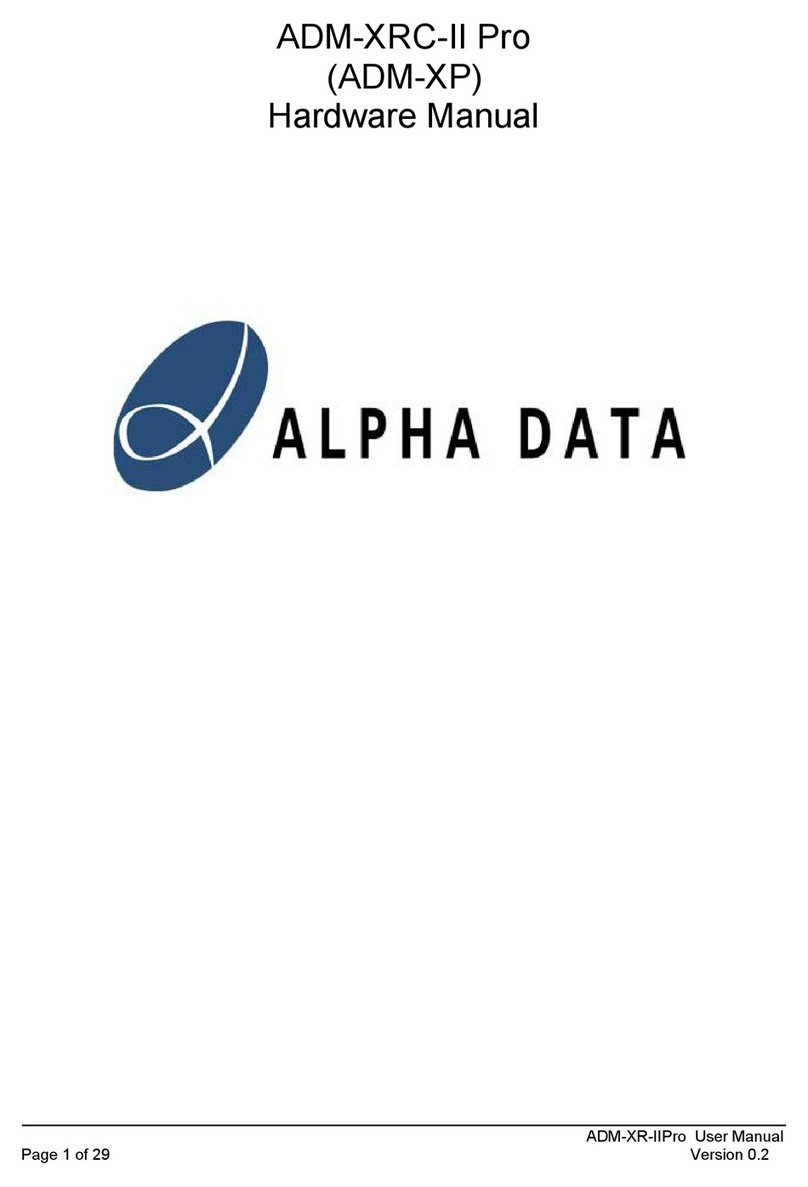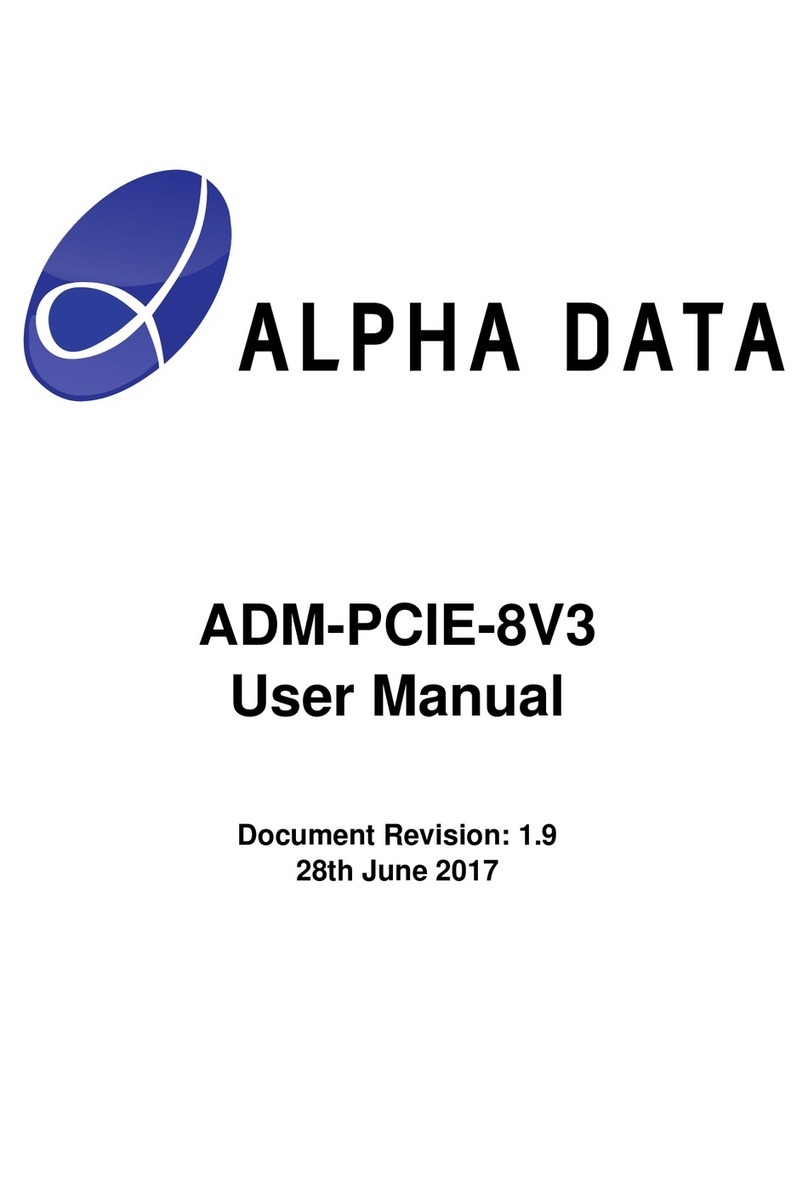ADM-PCIE-8K5-FH User Manual
Table Of Contents
1 Introduction 1
1.1 Key Features ................................................................................................................................. 1
1.2 Order Code .................................................................................................................................... 1
2 PCB Information 2
2.1 Physical Specifications ................................................................................................................. 2
2.2 Chassis Requirements ................................................................................................................... 2
2.2.1 PCI E press ............................................................................................................................... 2
2.2.2 Mechanical Requirements ......................................................................................................... 2
2.2.3 Power Requirements ................................................................................................................. 2
2.3 Thermal Performance .................................................................................................................... 3
2.4 Optional Blower ............................................................................................................................. 3
3 Functional Description 4
3.1 Overview ........................................................................................................................................ 4
3.1.1 Switches .................................................................................................................................... 5
3.1.2 LEDs .......................................................................................................................................... 6
3.2 Clocking ......................................................................................................................................... 7
3.2.1 PCIe Reference Clocks ............................................................................................................. 7
3.2.2 Fabric Clock ............................................................................................................................... 7
3.2.3 Programming Clock (EMCCLK) ................................................................................................. 8
3.2.4 SFP+ .......................................................................................................................................... 8
3.2.5 FireFly ........................................................................................................................................ 8
3.2.6 DDR4 SDRAM Reference Clocks .............................................................................................. 9
3.3 PCI E press ................................................................................................................................... 9
3.4 DDR4 SDRAM ............................................................................................................................. 10
3.4.1 MIG IP setup requirements rev2 + newer PCBs ...................................................................... 10
3.5 SFP+ ............................................................................................................................................ 11
3.6 FireFly .......................................................................................................................................... 12
3.7 System Monitor ............................................................................................................................ 13
3.7.1 Automatic Temperature Monitoring .......................................................................................... 13
3.7.2 System Monitor Status LEDs ................................................................................................... 14
3.8 SMA Timing Input ........................................................................................................................ 15
3.9 USB Front Panel Interface ........................................................................................................... 15
3.10 Configuration ............................................................................................................................... 16
3.10.1 Configuration From Flash Memory .......................................................................................... 16
3.10.1.1 Building and Programming Configuration Images ............................................................... 16
3.10.1.2 Custom Flash Write Interface .............................................................................................. 17
3.10.2 Configuration via JTAG ............................................................................................................ 17
3.11 GPIO Option ................................................................................................................................ 18
3.11.1 Direct Connect FPGA Signals .................................................................................................. 18
3.11.2 Low Speed Serial IO ................................................................................................................ 18
3.12 User EEPROM ............................................................................................................................. 19
Appendix A Complete Pinout Table 21
List of Tables
Table 1 Mechanical imensions ..................................................................................................................... 2
Table 2 Available Power By Rail ..................................................................................................................... 2
Table 3 SW1 Switch Functions ....................................................................................................................... 5
Table 4 LE etails ........................................................................................................................................ 6































